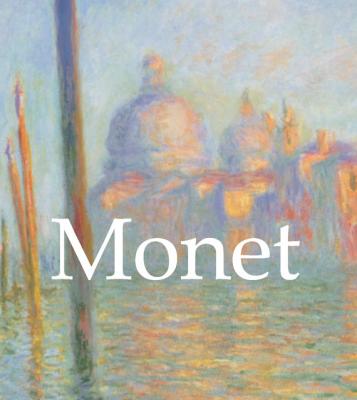ТОП просматриваемых книг сайта:
Monet. Nathalia Brodskaya
Читать онлайн.Название Monet
Год выпуска 0
isbn 978-1-78160-968-2, 978-1-78042-219-0
Автор произведения Nathalia Brodskaya
Жанр Иностранные языки
Серия Mega Square
Издательство Parkstone International Publishing
1926: 5 December, dies at Giverny.
Numerous portraits of Monet have survived from various stages of his life – self-portraits, the works of his friends (Manet and Renoir among others), as well as photographs by Carjat and Nadar.
The Painter with a Pointed Hat
Drawing
Many literary descriptions of Monet’s physical appearance have come down to us as well, particularly after he had become well-known and much in demand by art critics and journalists. In 1919, when Monet was living almost as a recluse at Giverny, not far from Vernon-sur-Seine, he had a visit from Fernand Léger, who saw him as “a short gentleman in a panama hat and elegant light-grey suit of English cut… He had a large white beard, a pink face and little eyes that were bright and cheerful but with perhaps a slight hint of mistrust…”
The Towing of a Boat in Honfleur
1864
Oil on canvas, 55.5 × 82 cm
Memorial Art Gallery of the University of Rochester
New York
Mouth of the Seine River in Honfleur
1865
Oil on canvas, 90 × 150 cm
Norton Simon Museum
Pasadena, California
Both the visual and the literary portraits of Monet depict him as an unstable, restless figure. Monet’s abrupt changes of mood, his constant dissatisfaction with himself, his spontaneous decisions, stormy emotions and cold meticulousness, his consciousness of himself as a personality moulded by the preoccupations of his age, set against his extreme individualism – taken together these features elucidate much in Monet’s creative processes and attitudes towards his own work. Claude-Oscar Monet was born in Paris on 14 November, 1840, but all his impressions as a child and adolescent were linked with Le Havre, the town where his family moved in about 1845.
The Pavé de Chailly in the Forest of Fontainebleau
1865
Oil on canvas, 97 × 130 cm
Ordrupgaardsamlingen
Charlottenlund-Copenhagen
Bazille and Camille (Study for the “Luncheon on the Grass”)
1865
Oil on canvas, 93 × 68.9 cm
National Gallery of Art, Washington DC
The surroundings in which the boy grew up were not conducive to artistic studies: Monet’s father ran a grocery business and turned a deaf ear to his son’s desire to become an artist. Le Havre boasted no museum collections of significance, no exhibitions, and no school of art.
Woman in a Green Dress (Camille)
1866
Oil on canvas, 231 × 151 cm
Kunsthalle, Bremen
The gifted boy had to content himself with the advice of his aunt, who painted merely for personal pleasure, and the directions of his school-teacher. The most powerful impression on the young Monet in Normandy was made by his acquaintance with the artist Eugène Boudin.
Boats in the Port of Honfleur
1866
Oil on canvas, 49 × 65 cm
Private collection
It was Boudin who discouraged Monet from spending his time on the caricatures that brought him his initial success as an artist, and urged him to turn to landscape painting. Boudin recommended that Monet observe the sea and the sky and study people, animals, buildings and trees in the light, in the air.
Luncheon on the Grass
1866
Oil on canvas, 130 × 181 cm
The Pushkin Museum of Fine Arts
Moscow
He said: “Everything that is painted directly on the spot has a strength, a power, a sureness of touch that one doesn’t find again in the Studio.” These words could serve as an epigraph to Monet’s work.
Women in the Garden
1866
Oil on canvas, 256 × 208 cm
Musée d’Orsay, Paris
Monet’s further development took place in Paris, and then again in Normandy, but this time in the company of artists. His formation was in many ways identical to that of other painters of his generation, and yet at the same time his development as an artist had profoundly distinctive individual features.
Garden in Blossom
About 1866
Oil on canvas, 65 × 54 cm
Musée d’Orsay, Paris
Monet preferred current exhibitions and meetings with contemporary artists to visiting museums. A study of his letters provides convincing evidence that contact with the Old Masters excited him far less than the life around him and the beauties of nature.
The Beach at Sainte-Adresse
1867
Oil on canvas, 75.8 × 102.5 cm
Art Institute of Chicago
What, then, did particularly strike Monet during his first trip to Paris in 1859? An exhaustive reply is found in his letters to Boudin from Paris after his visit to the Salon. The young provincial passed indifferently by the historical and religious paintings of Boulanger, Gérôme, Baudry and Gigoux; the battle-scenes depicting the Crimean campaign do not attract him at all; even Delacroix, represented by such works as The Ascent to Calvary, St. Sebastian, Ovid, The Abduction of Rebecca and other similar subject paintings, seems to him unworthy of interest.
1867
Lady in the Garden Sainte-Adresse (Jeanne-Marguerite Lecadre in the Garden)
Oil on canvas, 80 × 99 cm
The Hermitage, St. Petersburg
The Lunch
1868
Oil on canvas, 230 × 150 cm
Städelsches Kunstinstitut und Städtische Galerie
Frankfurt
Corot on the other hand is “nice”, Theodore Rousseau is “very good”, Daubigny is “truly

